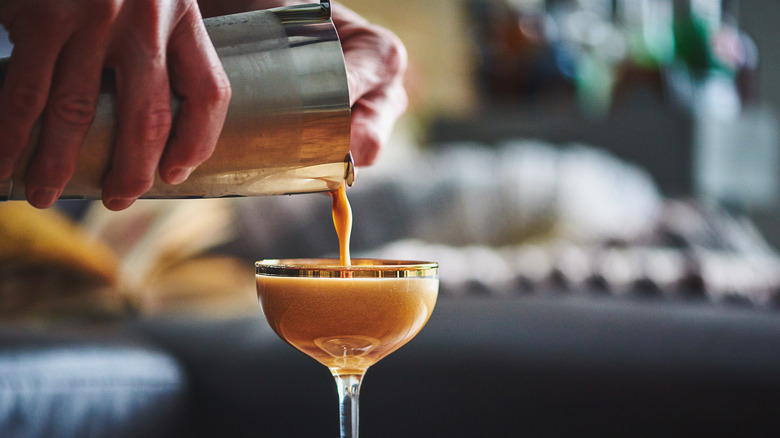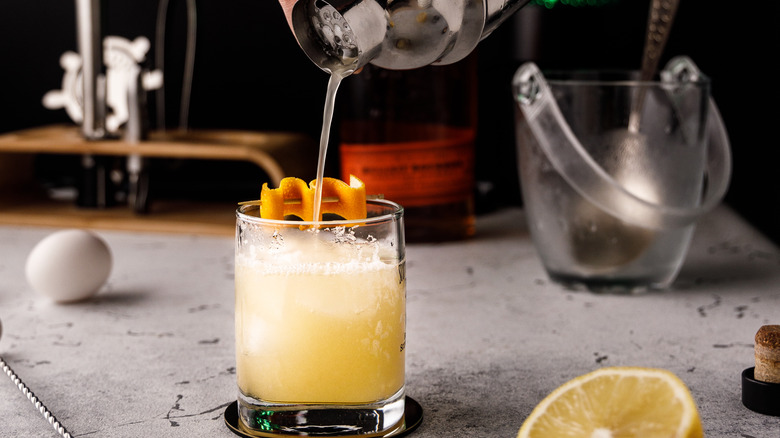Try The Dry Shake Technique For Foamy Home Bar Cocktails
Few things hit quite like that first sip of a particularly foamy, creamy, velvety cocktail. Chances are there's a delicious drink that comes to mind with that description: maybe it's that last frothy gin fizz you had, or the smooth and bold espresso martini you always order at your go-to bar or restaurant.
But, you don't need to venture out of your home to sip on one of these expertly crafted creations. Even if you don't fully trust your own bartending skills, there's a fairly simple technique you can master to take those homemade classic cocktails up a notch — the dry shake, an art that involves shaking all of the ingredients together without ice to produce some extra texture.
Dry shaking is the surefire step you need to make any fizzy, foamy drink look, taste, and feel exactly like you just sat down at a fancy cocktail bar. A crucial component is that the recipe includes egg whites or cream and that the drink is meant to have that quintessential layer of foam.
How and when to implement the dry shake
To dry shake your homemade drink, you'll want to combine all of your ingredients in a cocktail shaker — everything but the ice, that is — and shake thoroughly. It should take around two minutes for everything to bubble up nicely and produce that airy, foamy texture. Without any ice to chill and dilute everything, dry shaking helps the ingredients disperse, combine, and emulsify more easily, ultimately creating that silky layer that will naturally "top" the drink.
But, you will need to pair this technique with the classic wet shake to bring the drink to its sippable finish. It can be done in one of two ways. You can dry shake all of the ingredients first, then add ice and do everything again to finish it off. Or, you can shake the ingredients with ice first, like you traditionally would, then strain the liquid, remove the ice, and do so again dry — this method is called a reverse dry shake.
There's no question that this practice will result in more foam; the question is usually when to do either one. A good rule of thumb is to employ the classic dry shake if you want a more delicate or creamy layer, and the reverse option if you want a thicker layer of foam with larger bubbles.
Classic cocktails to make at home
Not all drinks require this step, however. If you want some ideas for classic cocktails you can dry shake at home, try these velvety concoctions.
One of the ones most known for its thick foamy top is a gin fizz, which combines gin, citrus, sugar, soda water, and an egg white. But there are many variations: some of which use different spirits, like the Japanese Fizz made with rye and port; some even include cream, like the Ramos Gin Fizz. Another great drink candidate for dry shaking is something in the sour family — whether it's a whiskey sour, a pisco sour, a gin sour, or another more creative version. Sours are typically composed of the chosen spirit, some type of citrus juice or syrup, bitters, and an egg white for that crucial foamy top.
More cocktails outside of fizzes and sours that will come out frothy and delicious with a dry shake include an espresso martini, a Clover Club, a White Lady, a Bee Sting, and a White Dragon.



